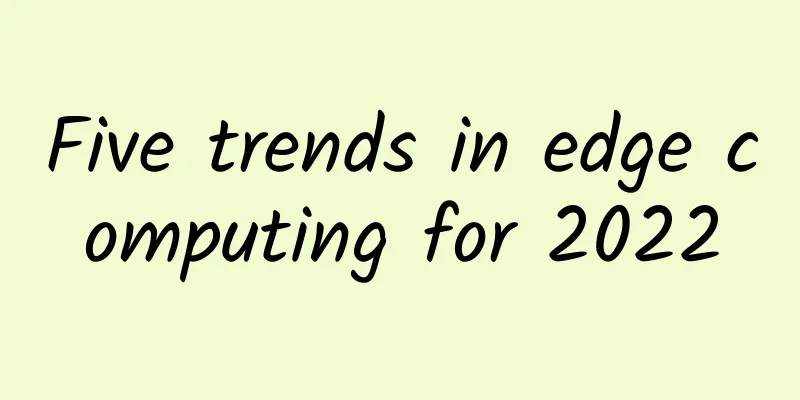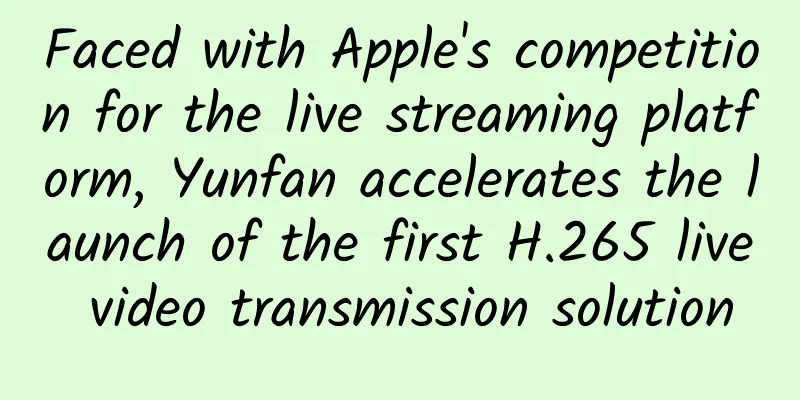Five trends in edge computing for 2022

|
Edge computing trends play a key role in business as edge deployments are now essentially everywhere. With the list of edge computing devices, including smartphones, smartwatches, and self-driving cars, growing at an exponential rate, business professionals need to stay on top of cutting-edge trends as we head into 2022. In fact, after several years of development, it looks like edge computing will make huge strides in adoption and investment in 2022. Here are the edge computing trends to watch. 1. Internet of ThingsThe Internet of Things (IoT) is undoubtedly the fastest growing edge computing device. IoT devices include:
The penetration of smart devices themselves is expected to quadruple by 2025, and this growth will greatly expand the capabilities of edge computing. In fact, the growth of the Internet of Things may bring even greater benefits to the edge computing space, such as lower latency. The rise of IoT devices will not only drive the development of edge computing, but also bring changes to various industries such as healthcare and education. In fact, IoT devices in edge computing deployments are now being utilized by the healthcare industry to help track changing data sets and remotely monitor facilities. 2. Customer ExperienceOne of the more unique ways edge computing is being leveraged to help businesses is in the area of customer experience. By leveraging the low latency of edge computing, businesses are able to provide the best possible customer experience. Conglomerates such as Disney are using IoT sensors and edge computing to quickly transmit data on the performance of rides. This data is used to make adjustments to optimize rides and attractions, ensuring minimal disruption to park visitors. On a more practical level, the speed gains that edge computing brings to businesses can dramatically impact sales. A Deloitte study found that for every 100 millisecond improvement in mobile retail speed, sales conversion rates increased by 8.4%. Reduced latency can also help marketers and businesses process customer data in near real time. This allows marketing teams to build more personalized and interactive customer experiences, such as advanced chatbots, and even offline interactions. 3. SecurityFrom cloud computing to artificial intelligence, cybersecurity is a rising issue as we head into 2022. Various growing technologies, such as 5G and IoT, have their own cybersecurity vulnerabilities. Edge computing is being leveraged to mitigate these potential threats. Traditional centralized networks and data storage give attackers a single target center. In a sense, edge computing diversifies this network and provides greater protection. This doesn’t mean edge computing is flawless. In fact, much of 2022 will be defined by companies struggling to address edge computing security flaws rather than its strengths. A report from Kollective shows that 66% of IT teams believe edge computing is a threat to the enterprise. One of the main threats posed by edge computing is its increase in physical data sources. Because edge computing relies on more physical resources being placed in the real world, physical attackers are given more targets to disrupt the network. If malicious actors somehow gain access to these devices, they can extract valuable information, tamper with or destroy node circuits, or even change the entire operating system and node software. Still, the topic is fairly divisive. Some, like Kirk Wolfe, VP of corporate development at Kollective, believe that concerns about edge computing overshadow its benefits and may even slow adoption. Clearly, cybersecurity is an ongoing issue that relies on many continually advancing technologies, including edge computing. Expect these issues to be continually debated as the technology evolves. 4. Edge computing in healthcareThe healthcare industry has been at the forefront of IoT adoption, so it stands to reason that they’re also leading the way in edge computing technology. Large hospitals are realizing that it’s better for operations to keep data from things like medical sensors, electronic health records and digital imaging systems close to them, rather than pushing it to the cloud. 5. Workplace safety in the energy sectorOne of the most actionable and important benefits of edge computing is its application in oil and energy-related industries. These industries have traditionally relied on collecting and transmitting data to observation centers that are often very far away. This means that if there are sensors tracking pressure and conductivity, there is more data. |
>>: 5G message is coming, please check!
Recommend
How 5G deployment will impact enterprise network hardware and software
For most enterprises, IT teams will deploy fifth-...
Real-time advertising recommendation system implemented by SpringBoot and Apache Doris
This topic aims to provide readers with an in-dep...
Detailed explanation of STM32 network DMA controller
[[380257]] The block diagram of the STM32 network...
Can Chrome DevTools' Network be used like this?
If you were to pick the most used feature in Chro...
Is 5G network harmful to the body? Scientific facts answer your questions
There are many rumors that 5G is harmful to the h...
ShockHosting: $4.99/month-2G/30GB/2TB/13 data centers including Los Angeles, Seattle, Japan, etc.
The last time I shared information about ShockHos...
Redis actually has a custom network communication protocol?
[[385171]] All network communications require bot...
Yan Lida, President of Huawei Enterprise BG: Achieving Dreams and Creating Infinite Possibilities
On September 7, the third day of the All-Connect ...
Without IPv6, there is no future. Let’s talk about the necessity of deploying IPv6.
The first large-scale IPv6 transformation was in ...
Towards dual carbon: Green demands and competition focus in East and West computing
If we take stock of the hottest trends in the tec...
DNS record types
[[400276]] This article is reprinted from the WeC...
5G technology can now read human emotions in public areas
[[403225]] The birth of a new and influential 5G ...
China's Internet world under the epidemic is being "mirrored" around the world
DingTalk made its debut in Japan. "Well... t...
The darker operation of the United States has just begun. How can Huawei break the impasse when it is innocent but guilty of possessing a treasure?
[Original article from 51CTO.com] In just one wee...
The battle of 1G to 5G, the communication reshuffle is about to begin
Recently, there has been a big conflict between H...









